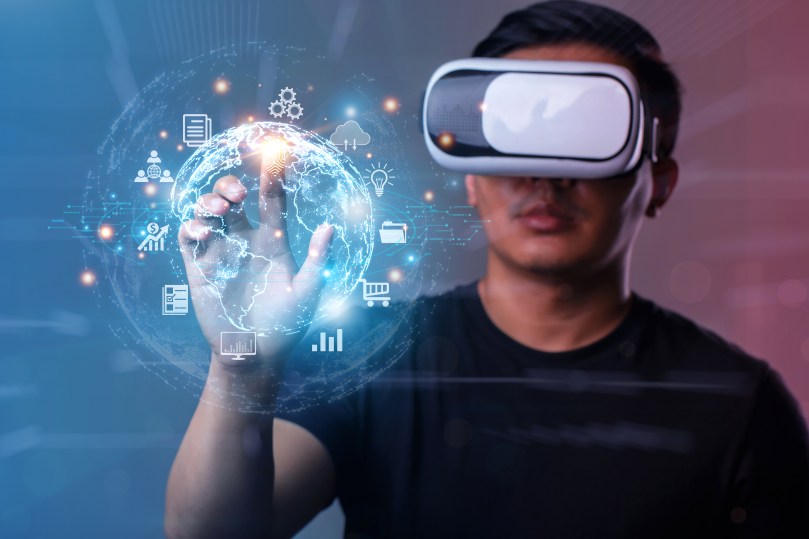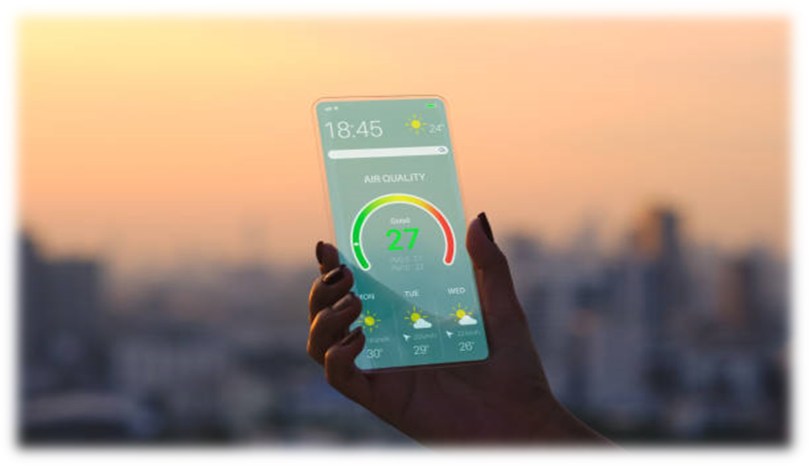Augmented reality (AR), virtual reality (VR), extended reality (XR), and the metaverse are terms you’re probably hearing more and more. They’re also all interrelated, with AR and VR being specific types of XR and the metaverse referring to the virtual world made possible by these innovations. These technologies have not yet reached their peak potential. Each has only just begun to see adoption and use cases in the real world.
Despite this, we know that these trends are primed for success because they are applicable to our everyday lives. They provide us with new ways to experience the world and improve it at the same time. The way that AR, VR, XR, and the metaverse will impact our future is extensive and positive, so let’s take a look at how these emerging technologies can help reshape our planet and society for the better.
AR and VR in the Real World
Virtual reality is the creation of digital environments that we can experience through headsets and computers. On the contrary, augmented reality places generated graphics in the real world, where AR users view these artificial graphics in the real-world environment using a device like their phone. Both applications include video games, education and training, and tourism. AR and VR in the real world are still a work in progress, but they show great promise.

More and more companies are exploring the possibilities of VR and AR. The technology is being used for a wide range of applications, from gaming and entertainment to education and training. Many believe that these technologies will have a profound impact on society over the next decade, with some predicting they will become an essential part of daily life.
The Impact of XR
There are multiple ways XR can enhance our lives. For example, VR can be used for training purposes, allowing users to practice specific tasks without the risk of damaging real-world equipment or harming actual people. It can also be used in simulations, allowing users to test different scenarios and see how they might react before encountering those situations in the real world.
Several sectors are seeing the benefits of VR now and are continuing to improve upon these experiences. Let’s examine a few:
Advancements in Health Care and Wellness
One of the most important applications for VR technology is in health care. For example, XR can be used to create immersive simulations of medical procedures, allowing doctors to train more effectively and thereby increase patient safety. For instance, companies such as RediMinds are creating VR experiences for doctors to investigate organs and plan surgeries before the procedure ever happens. VR has also been used in therapy to help people with PTSD, anxiety and other mental health conditions cope with their symptoms.
Additionally, VR could be used to promote healthy behaviors and encourage people to adopt healthier lifestyles. By immersing patients in different environments, like a forest or beach, VR could help them change their habits and get more involved with healthy activities. These relaxing virtual environments have been shown to reduce stress and anxiety levels, which can improve overall wellbeing. Simply put, XR has the potential to revolutionize healthcare and wellness efforts around the world.
Environmentally Friendly Benefits
VR and AR have the potential to impact our environment in a friendly way. Some VR specialists simulate environmental experiences to show climate change’s consequences. For example, “Greenland Melting” explores the greenhouse influence on glaciers and ice caps. It puts players on glaciers, causing widespread depletion and harming marine life. When people experience substantial climatic changes in VR, they’re more inclined to cut emissions and reduce environmental damage.

Planning infrastructure sustainability with VR is another use case. A major goal in improving societal efficiency revolves around improving infrastructure. Visual enhancement technologies can help construction workers with project planning. Also, planners can walk around a floor plan, finding flaws and early remedies. AR and VR help reduce material and energy waste during construction, which overall reduces pollution and emissions.
Inclusion and Diversity Advances
Because of its flexibility and immersion, AR/VR technologies are well situated to break down barriers and open doors for underprivileged populations and underrepresented groups. We can use immersive experiences to combat prejudice in fields as diverse as education and law enforcement and corporate diversity, equality, and inclusion programs. However, research is still needed in this area to determine these methods’ effectiveness, especially in bias education and emotional intelligence development.
Immersive technology can help break through barriers dealing with location and accessibility. For example, field trips are often expensive for some students, but VR and AR can make field trips a possibility by letting students have virtual learning experiences right in the classroom.
The Metaverse: Extended Reality’s Bigger Picture
As we reach the cusp of extended reality, the possibilities for this technology are almost limitless. The metaverse is a hypothetical, fully immersive VR environment that could represent everything from an alternate reality to a completely new universe. It’s becoming increasingly possible thanks to our ever-developing technology and the remarkable progress made by companies like Meta and HTC, both of whom are investing heavily in VR research and development.
The potential applications of VR and AR are almost infinite, from training simulations to immersive video experiences. But we must overcome several key challenges for XR to become more widely adopted.
- First, high-quality VR headsets are still expensive.
- Second, content creators must develop engaging and accessible content for the mass market.
- Finally, users must adopt new behaviors and mental models when interacting with virtual environments.
When these challenges are overcome, extended reality technologies could help reshape our society profoundly through the metaverse.
What’s To Come with XR and the Metaverse?
As virtual reality and augmented reality technologies evolve, it’s becoming increasingly possible that these new technologies will become a part of our everyday lives. However, it’s also worth noting that several factors will determine whether AR and VR become mainstream: the capabilities and prices of devices, availability of content, and general public interest and adaptation.
The state of the XR market may hinge on how quickly these technologies are adopted. We can only talk about the current state of these technologies and make educated guesses about their future potential, but it’s clear that companies are betting big on these innovations and what they have to offer.
Are you personally or your organization experimenting with AR/XR/VR and the metaverse? Share your experiences in the comment field below or tweet me at @UlvBjornsson

[…] companies also needed newer and enhanced ways to connect with their audience, with many adopting Virtual Reality / Augmented Reality to help develop stronger digital relationships with their core market and provide an improved […]
LikeLike
[…] example, some retailers use AR to show customers how a product will look when they wear it or how it would look in their homes by virtually placing it on their walls or furniture. This is one of the […]
LikeLike
[…] metaverse is coming, and it should be open source. The metaverse is a virtual world that will include all kinds of virtual reality (VR) applications. You can think […]
LikeLike